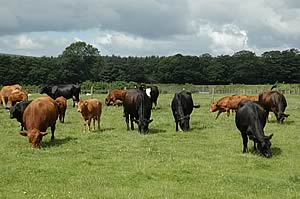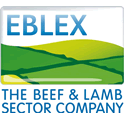28/05/08
Pasture improvement can repay English beef and sheep producers’ investment more than five times over in extra feed production alone, reveals the latest Better Returns Programme advice from EBLEX Ltd, the industry body for beef and lamb levy-payers in England.
What is more, improving pastures with new grass varieties and the best balance of clover is also likely to markedly boost the quality of forage produced as well as both the drought tolerance and the nitrogen efficiency of the sward.
The new Improving Pasture for Better Returns manual, unveiled at the Grassland Event last week, shows reseeding a typical permanent pasture can produce an extra £800 worth of feed per acre over five years. In the same way, reseeding a five year ley is calculated to be worth £500/acre in extra output.
With a full reseed – including ploughing – currently costing £140/acre, this represents a return on investment of between 350% and 550% in output alone, depending on the pasture concerned. Such a return is more than sufficient to cover the cost of any lost production during reseeding; particularly so if spring reseeding allows an extra autumn crop of kale or stubble turnips to be produced or autumn reseeding is undertaken with sufficient care.
For the greatest overall benefit, the Manual stresses that underlying output-limiting factors like compaction, pH, phosphate and potash status, and weed populations should always be tackled as part of the reseeding programme.
Overall, it recommends:
- Reseeding once preferred grass and clover species fall below 50-60% of the pasture;
- Liming ahead of reseeding if the pH is 6.4 or less to maintain the optimum pH 6 - 6.5;
- Considering seedbed P and K if the soil indexes are below 3 and 2 respectively;
- Tackling weed problems ahead of reseeding and early in the new sward;
- Choosing grass species carefully to suit specific pasture management needs;
- Balancing grasses with red or white clovers for optimum efficiency;
- Selecting mixtures from merchants in the NIAB Herbage Varieties Guide scheme;
- Controlling key pests like leatherjackets, slugs and frit fly wherever necessary;
- Grazing lightly – ideally with young cattle – soon after establishment to boost tillering;
- Grazing well before winter to avoid winter kill;
- Taking care to avoid damage through over-stocking, especially in wet conditions;
The Manual – available free of charge to English levy payers from EBLEX at 0870 2418829 or brp@eblex.org.uk – provides practical advice on managing these and other pasture improvement priorities. These include the value of and place for overseeding as an alternative to a full reseed as well as the question of ploughing or direct drilling.
 Rich Pickings to be Had if Cows can Max on Grass Rich Pickings to be Had if Cows can Max on Grass
 Feed Costs Eating Up Milk Price Increases Feed Costs Eating Up Milk Price Increases
 Rising Energy and Raw Material Prices are Boosting Demand for Pellet Binders Rising Energy and Raw Material Prices are Boosting Demand for Pellet Binders |



